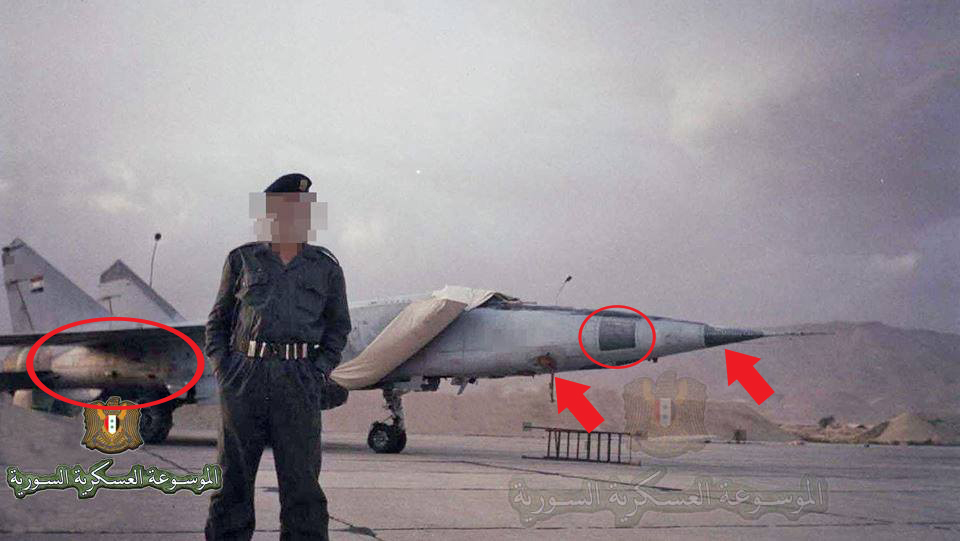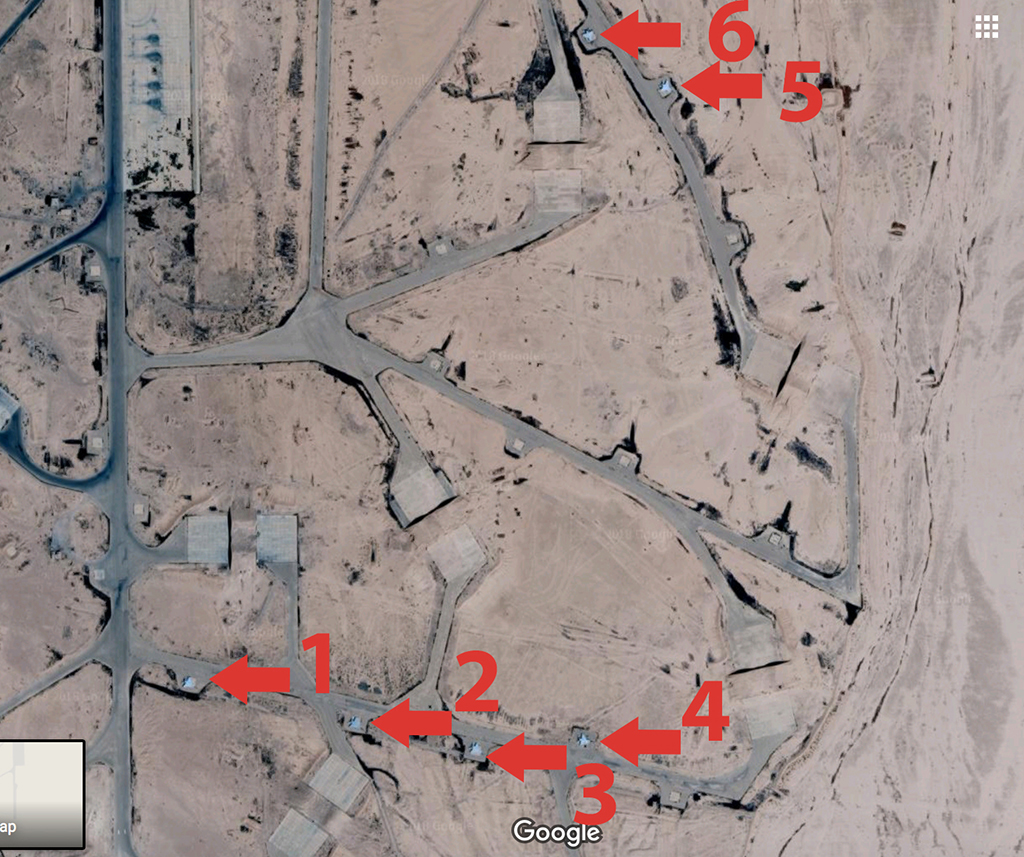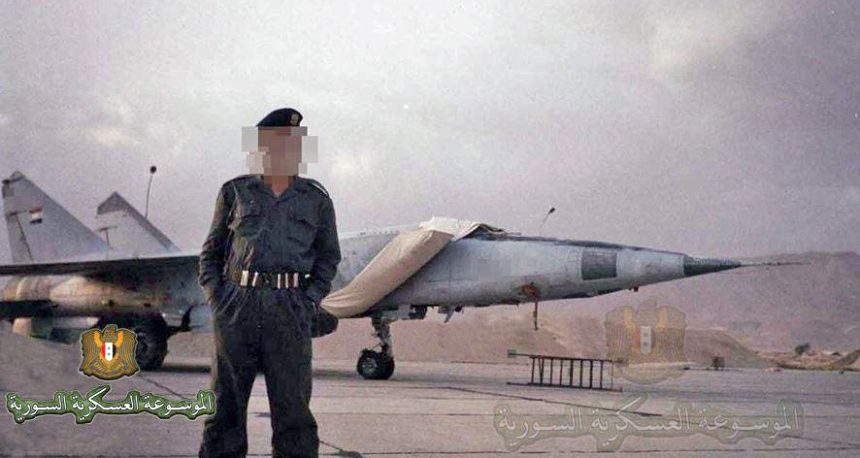After Years of Attrition, Does Syria Still Have Any Effective Foxbats?
Since it first appeared in grainy black and white spy photos in the late 1960’s and early ‘70’s the Mikoyan-Gurevich MiG-25 (NATO reporting name “Foxbat”) has been an enigma.
The big, boxy Foxbat was initially thought to be a new generation of dogfight-capable air superiority fighter that sparked the development of the U.S. F-15 Eagle. After Soviet pilot Viktor Belenko defected to Japan with one in September of 1976 western analysts learned the MiG-25 was actually a high-speed, high altitude point interceptor designed in response to the development of the canceled U.S. XB-70 Valkyrie. The Foxbat was not a new generation of super maneuverable dogfighter. They also learned the big, bulky Foxbat was not that advanced after all, relying on workmanlike construction, gigantic engines and a relatively simple, massive radar for its intercept capabilities.
But mystery still follows the Foxbat, at least in some services, even if its relevance as a viable combat aircraft has faded.
After the remarkable series of incidents on February 10, 2018, when Israeli aircraft first downed an Iranian UAV then launched a series of airstrikes into Syria in response (It’s complicated), Israel lost an F-16l Sufa, to Syrian SAMs. This incident, one of repeated Israeli incursion into Syrian air space, is combined with the regular activity of U.S. combat aircraft in the region along with delicately simultaneous operation of Russian combat planes in the region. Needless to say, the air space over Syria is extremely dynamic and complex lately.
Enter the mystery Syrian Foxbat(s).
A story appearing in the Russian language weekly news publication “Vestnik” on February 10, 2018, claimed that, “In the course of repelling Israeli air raids, the Syrians used virtually their entire air defense arsenal, including the legendary MiG-25PD interceptors.” We can’t verify the involvement of one of the remaining MiG-25s in the air raids though. The publication ran photos of what appears to be two different MiG-25 Foxbats, versions unspecified.
One of the aircraft is viewed from the front with an anonymous (presumably Syrian) man wearing a uniform in front of it. There is no date associated with the photo. The MiG-25 in this photo features a darker nose radome and carries what appears to be a pair of menacing looking AA-6 or R-40 Vympel (NATO reporting name “Acrid”) air-to-air missiles. However, the image dates back to a period preceding the civil war.

The AA-6 is the largest air-to-air missile ever fielded. Introduced in late 1959-early 1960, the missile was designed to complement the mission of the MiG-25, shooting down very large, very fast strategic bombers at very high altitude. It is not an agile dog fighting missile, but a long-range interceptor that locates and guides on its target with a massive and easily detected radar. The missiles are enormous, fully 20.5 feet long and weigh a staggering half-ton each. It doesn’t take much analysis to wonder how effective a giant air-to-air missile like the AA-6 would be against agile, recent generation Israeli combat aircraft, especially since the AA-6 was conceived in 1959 to shoot down a Mach 3 high altitude strategic bomber that never entered service.
That said, there are suggestions that the MiG-25 Foxbat/AA-6 combination can be lethal, or at least was lethal some decades ago. Journalist Tom Cooper reported that, “On February 13, 1981, Israeli F-15s ambushed a pair of Syrian MiG-25Ps and shot one down. In revenge, so the story goes, the Syrians set up an ambush on June 29, 1981. The Syrian MiG-25Ps destroyed one F-15 using two R-40/AA-6 Acrid air-to-air missiles fired from the range of 25 miles.” It is a noteworthy claim since some western sources boast that no F-15 Eagle has ever been lost in air-to-air combat.
Cooper, who filed his report in War Is Boring, went on to write, “There are problems with this [February 13, 1981] story. Neither the Syrians nor the Russians have ever provided any evidence, such as radar tapes or wreckage. Another issue is that the Syrian air force never actually received any MiG-25Ps. Syria acquired several batches of Foxbats, including two of MiG-25PDS interceptors, but no MiG-25Ps. While frequently described as a downgraded export variant of the Foxbat, the MiG-25PDS was actually much better-equipped than the early interceptor variant was. In addition to the powerful Smerch 2A radar of the MiG-25P, it had an infrared search-and-track system under the forward fuselage, radar warning receivers in blisters on the intakes and big chaff and flare dispensers in place of the wing fences. Any source citing ‘Syrian MiG-25Ps’ is of dubious quality.”
In the 1991 Gulf War the MiG-25 performed better, at least in Iraqi Air Force service. On the very first night of the air war over Iraq a pair of F/A-18Cs from VFA-81, the “Sunliners”, flying off of the USS Saratoga were attacked from beyond visual range by a pair of MiG-25PD Foxbats from the Iraqi 96th Fighter Squadron. Iraqi Air Force Lieutenant Colonel Zuhair Dawood downed one of the U.S. Navy F/A-18Cs using an R-40 missile according to a declassified report from the U.S. Central Intelligence Agency. It had previously been reported that the F/A-18C, piloted by Lieutenant Commander Scott Speicher, was shot down by ground fire.
A second photo of what appears to be a different MiG-25 also appears in the Vestnik article from February 10, 2018. This second Foxbat has a different nose and radome section and no missile pylons on the wings. This could be a reconnaissance variant of the MiG-25. Still, the photograph is not recent: you can find it online since 2015 although it’s not known when it was taken.

Beyond these two examples of MiG-25s it is difficult to tell if Syria has any other airworthy Foxbat interceptors.
Satellite imagery from sources like Google Earth and SpaceKnow Analytics, a private satellite imagery intelligence provider, show a large number of MiG-25s sitting around the T4/Tiyas Military Airbase in Homs, Syria just west of Palmyra as recently as May 2016 when ISIS forces attacked the base. Many of the aircraft appear to be parked on non-paved surfaces. Photos posted on the Internet during the last decade show some of the aircraft, covered in dust and sitting on sand. Only a few of the MiG-25s, six by our count on the most recent satellite photo we could find, appear to be sitting on tarmac. This commercial satellite imagery is certainly dated, well over a year old. If you care to, you can arrange for more recent satellite imagery through SpaceKnow Analytics, a pass over the Tiyas Military Airbase and the comparative before/after imagery will set you back about $1,260.00 USD per square kilometer according to the company’s website.

A less expensive and more recent alternative public resource for intelligence about the mystery MiGs of the Syrian Air Force is FlightGlobal.com, Flight International World Air Forces reference for 2017. This private intelligence resource lists only 2 MiG-25s in current Syrian Air Force service, likely the two that appear in the photos from the Russian media outlet, Vestnik, in the February 10, 2018 article.
recent photo from T4 AB confirm again that few SyAAF Mig-25 may be operational @SyrianMilitarypic.twitter.com/ZBkmp8j2x2
— Within Syria (@WithinSyriaBlog) January 18, 2017
While we cannot be entirely certain that Syria is down to its last two MiG-25 Foxbats, and that it may be possible that only one is an interceptor version, there is little other open source intelligence to suggest there are any more MiG-25s in serviceable condition. Perhaps the best conclusion to make is that both Israel and the U.S. know exactly how many of the boxy Foxbats are still flyable for Syria, and what kind of a threat they may pose.

One thing for sure, the rare Syrian Foxbats are like the last white rhinos to a big game poacher. You can bet that if the Syrians cross sabers in the air again with either the Israelis or the Americans, those pilots will do their best to add a Syrian MiG-25 kill mark to the nose of their aircraft.
Top image: one of the mysterious Syrian MiG-25 Foxbat photos seen in a February 10, 2018 Russian news article. The photo first appeared online in 2015 but may date back to several years earlier. (Photo: Vestnik)









